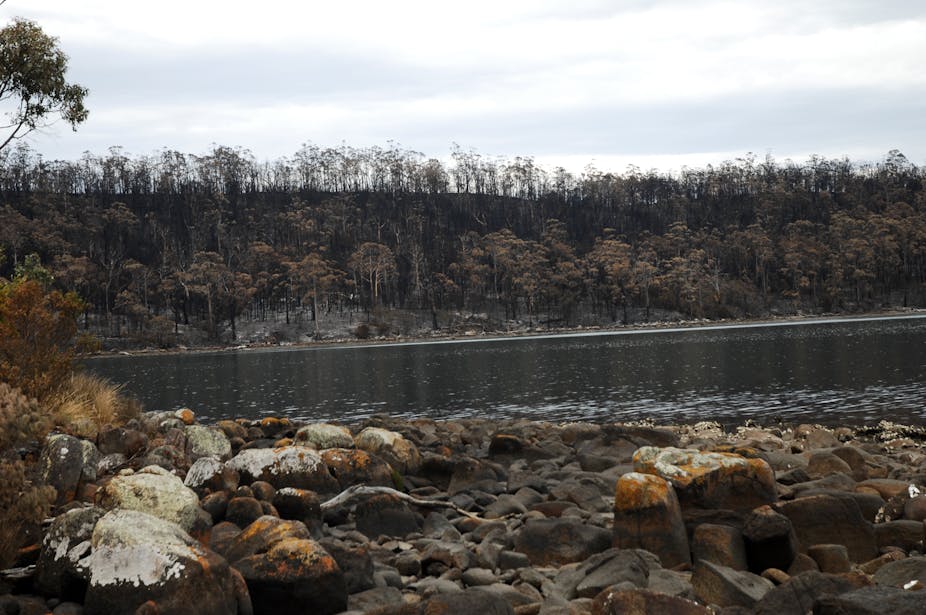Radical circumstances (bushfires and natural disasters) flush out the mental illness in society. Whenever there’s a disaster, there’s a rush on hospital admissions for psychiatric problems. But on the whole, the illness is already there.
Emergencies naturally make fodder for delusions and the emergency efforts, for mania. Obviously, there are direct mental health consequences – a small rise in post-traumatic stress disorder inevitably follows disaster. This correlates with the severity of the consequences of the disaster (loss of family, friends, animals and property).
And there’s usually a big rethink, with about a third of those affected leaving the area permanently. But, for the most part, this isn’t driven by mental health issues, it results from the very real fears about whether living in a fire (or other disaster) zone is worth it.
Resilience and weakness
In terms of mental health, the real effect of disasters is surprising. When handled well (as they have been in the recent efforts), disasters are an opportunity for communities and people who are directly involved to galvanise, and this appears to inoculate against mental illness by strengthening social bonds, and feeding a sense of purpose and meaning.
Another surprise is the flipside – an inexplicable rise in the mental illnesses that affect the elderly. Those who are frail and can’t get involved may feel they are ultimately only a burden. Such people suffer terribly from mental illness as a result of disasters. The big rise in mental health admissions after a bushfire happens in this group – its first presentations of dementia and senile degeneration is many times higher than with any other mental illness.
The complexity of social, environmental and psychological dynamics during an emergency cannot be underestimated. With normalcy going with the first evacuees, the strength of “all that is good” becomes the new foundation. As the National Strategy for Disaster Resilience points out, the power of the community (people you never met before come out of the woodwork to help), and the abiding dedication of the emergency services can be truly inspiring. And this is just the thing for building physical and mental resilience.
A useful way to understand this effect is through a theory called salutogenics. The theory rests on a relative sense of coherence that’s built by fostering three things – manageability, comprehensibility and meaning. Conversely, the sense of coherence is depleted by anything that rattles your ability to cope – not only a lack of resources required to manage; a lack of knowledge needed to comprehend circumstances, or a lack of meaning in life, but more general forces like the entropy of age and time.

While emergencies inevitably attack the ability to manage, they allow for meaning by providing clear answers to life’s big question – what are you here for? Getting involved in an emergency effort gives the answer – I’m not a parasite, I’m here to save people. I’m a contributor.
The formation of beliefs like these has been shown to assist in the widest gamut of health outcomes, not only in mental health. Recent research has also identified the effect of improved meaning and comprehensibility in conditions as diverse as heart disease and cancers. Surprising as it is, disasters can actually improve health if people find a way to get meaningfully involved in the disaster response effort.
Perceiving is believing
Reading this, you might think a bushfire is a wonderful thing. But there’s a big caveat – in emergencies, the perceptions of those involved are critical. Good interpersonal connections create meaning, but the lack of structure within emergency situations also provides opportunities for selfishness and even criminality. And these inevitably lend themselves to atrocious outcomes (consider Hurricane Katrina).
Good information improves comprehensibility, but in an emergency, information may be hard to come by and is frequently manipulated. What’s more, people might not have the heart to be honest when it matters most.
An under-promise allows low expectations to be exceeded, and this allows for a powerful message of hope and the belief that everything ultimately works out well. On the other hand, disappointment is easily taken as betrayal.
Disaster victims should be expected to make unreasonable demands. Victims may, for instance, extract promises that are difficult or impossible to keep. Who, after all, wants to deny someone who is desperate and might have his life in danger? Who wouldn’t prefer to lie and say, “don’t worry. Everything will be fine”?
But a hastily made guess that “someone will be there to help in a couple of hours” can start doing damage at 120 minutes and one second. The reason is because the promise suddenly becomes questionable, and at this point, comprehensibility collapses and meaning starts to erode. What could be more destructive mentally?

